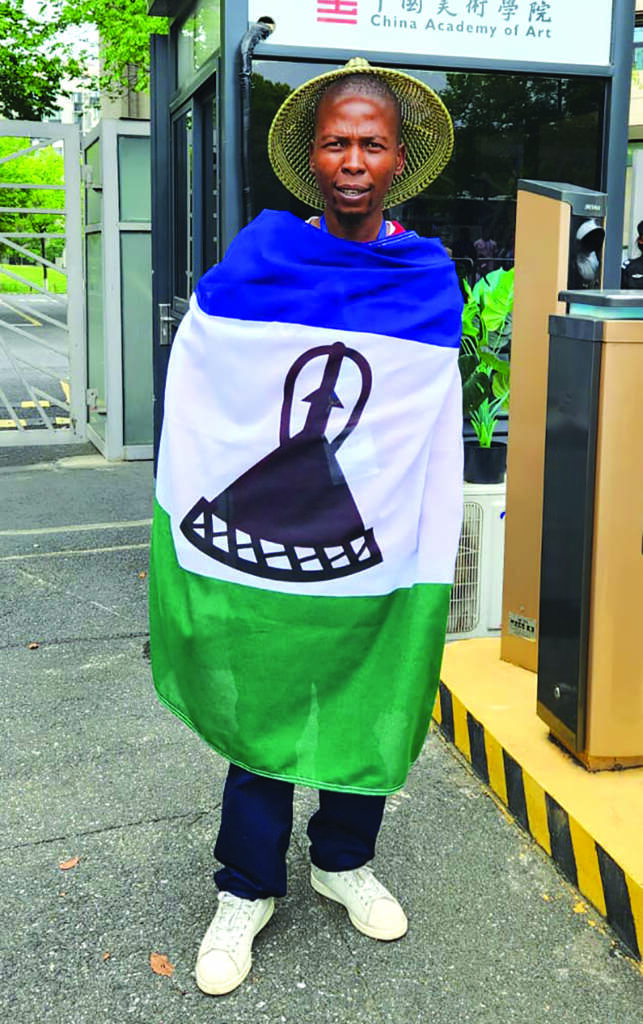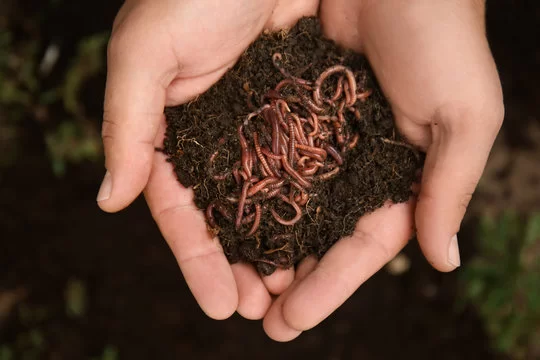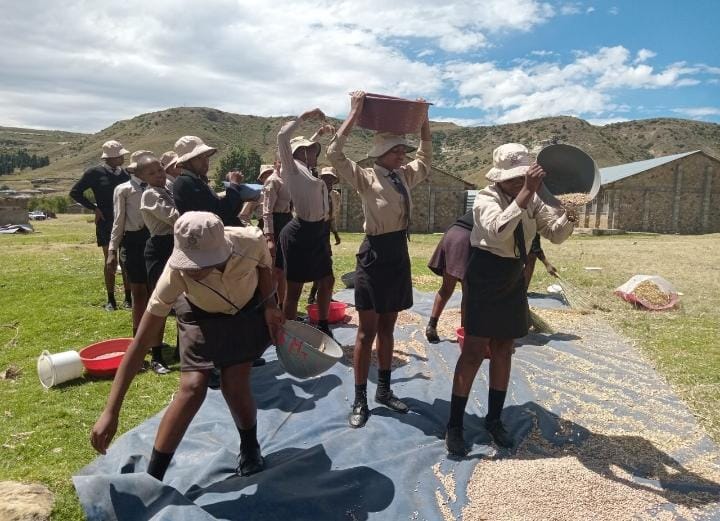Libuseng Molato
Agriculture always takes precedence, even from its by-products.
Rethabile Lesenyeho is a skilled young man and the founder of Sustainable Arts and Crafts School, which offers non-degree bearing technical skills and sustainable basketry certificates.
He is also a business-oriented youth who qualified for the Sebabatso programme.
“Most schools only provide education, but we are distinguished by focusing on manufacturing and providing skills,” says Lesenyeho.
Lesenyeho inherited his skills from his grandmother at a very young age.
“I sold my first piece of grass at the age of seven,” he recalls.
As a teenager, he lost interest in weaving, but during his third year at the National University of Lesotho, he met a community man who was making baskets using reed and that rekindled his childhood memories.
“I approached the man, and he taught me. He loved my passion, and anytime I wasn’t busy with my studies, I would spend time with him until I became proficient,” he said.
“After completing my Bachelor of Science Degree in Chemical Technology, I continued making baskets and then fully engaged in crafts.
“For more knowledge, I attended student training in the Entrepreneurial Promotion course at the University of Lunabet, Germany, offered by the United Nations Educational, Scientific and Cultural Organization, and the Design Thinking for Youth in Sustainable Development programme offered by the United Nations Development Programme. From there, I learned and realised that agriculture provides a wide range of business opportunities with fewer expenses,” he expresses.
He explained that in weaving, there are two types of raw materials: locally available renewable resources and agricultural wastes.
“Agricultural wastes include hemp stalks, which are normally used for fibres and can easily be sourced from cannabis greenhouses, wheat straws, which are mostly used for roofing, and corn husk, which is currently in high demand.
“Corn husk is ideal for crafts and is accessible because it is available throughout the country. It has various advantages: it is soft, strong, and can be used to make any kind of craft. I would advise Basotho to use it because we have it in abundance. It can easily absorb any colour for decoration, unlike moseha (Merxmuellera Macowani), which only absorbs expensive and inaccessible craft dyes. Corn husk can even absorb any colour, be it food colouring or anything else, and it is cheap and accessible,” he clarifies.
Lesenyeho elucidated that using corn husks can be another way of increasing the maize value chain because buying the husk will motivate farmers to produce more. The great news is that soon he will supply farmers with silos made from corn husks, which are indigenous.
He mentioned that agricultural wastes and locally renewable resources can be used to weave various crafts like laundry baskets, lampshades, bedside drawers, and more, and the market is large.
The design thinking program made him think beyond producing more reeds without competing or tampering with fields for growing food.
He proposed producing reed in community dongas, which would help restore the environment by preventing soil erosion, assisting in producing clean flowing water, and helping to absorb carbon dioxide (carbon dioxide sequestration). Lesenyeho plans to meet with forestry officials to negotiate including growing reeds in efforts to prevent or fill dongas, as it is a need and reeds are drought-resistant and grow fast.
“I would advise the use of reeds for ceilings to avoid unnecessary deforestation, especially since reeds regrow quickly and can be used again the next year, unlike trees which take much longer to mature,” he mentions adding, “We need to take advantage of reed’s invasive growth and use it as a cheap raw material for production and income generation.”
Emphasising the promising market for crafts, he shared that he lost a major contract from Mr. Price Home that required the supply of one thousand baskets per week and another from Game Store that needed five thousand baskets per week.
“For such production, I need more reeds and more hands, which is where Lesotho Agricultural College came in. They have a lot of reeds, and we exchanged skills with students who provided us with the reed supply I need. This is a great advantage because after graduating, students will reinforce the use of planting reeds in their community dongas and wetlands to meet production capacity. Offering training will not only help to meet capacity but also promote other crafts products made with moseha besides just hats,” he adds.
His desire is for Basotho to understand the importance of reeds as they do about moseha, so the value chain becomes a more established market, allowing him to save time by not harvesting it himself.
“I am prepared and determined. Even though I already have a school, I am still going to collaborate with non-governmental organisations to share skills with youth,” he states.
“I had to formalise the training to ensure product quality consistency. With informal training, parents would advise their children to produce individually as soon as they acquired a little skill. Recently, we lost a significant order from Las Vegas, USA, which required lampshades. We couldn’t fill up a container because most skillful weavers are elderly women who cannot work under pressure to meet targets. There is a serious market for crafts, so I urge youth to come for training so we can combat unemployment and generate income. Testimonies are great, and I am proud that Woolworths is already selling our baskets. The challenge would arise if other branches in South Africa love the idea. We would still face capacity challenges,” he narrates.
From the Sebabatso trip to China, Lesenyeho gained a lot of creativity and skills, which will help him grow further.
“I loved the programme because it genuinely uplifted every Mosotho. When presenting our ideas at Sebabatso, they went the extra mile to provide a translator for those who couldn’t understand Sesotho, allowing Basotho youth to voice their ideas and express themselves clearly in their language,” he says this is a great opportunity for Basotho to avoid losing tenders to foreigners simply because they meet certain standards. Basotho have the skills needed to meet these standards.
Summary
- As a teenager, he lost interest in weaving, but during his third year at the National University of Lesotho, he met a community man who was making baskets using reed and that rekindled his childhood memories.
- “For more knowledge, I attended student training in the Entrepreneurial Promotion course at the University of Lunabet, Germany, offered by the United Nations Educational, Scientific and Cultural Organization, and the Design Thinking for Youth in Sustainable Development programme offered by the United Nations Development Programme.
- “I would advise the use of reeds for ceilings to avoid unnecessary deforestation, especially since reeds regrow quickly and can be used again the next year, unlike trees which take much longer to mature,” he mentions adding, “We need to take advantage of reed’s invasive growth and use it as a cheap raw material for production and income generation.

Your Trusted Source for News and Insights in Lesotho!
At Newsday Media, we are passionate about delivering accurate, timely, and engaging news and multimedia content to our diverse audience. Founded with the vision of revolutionizing the media landscape in Lesotho, we have grown into a leading hybrid media company that blends traditional journalism with innovative digital platforms.







